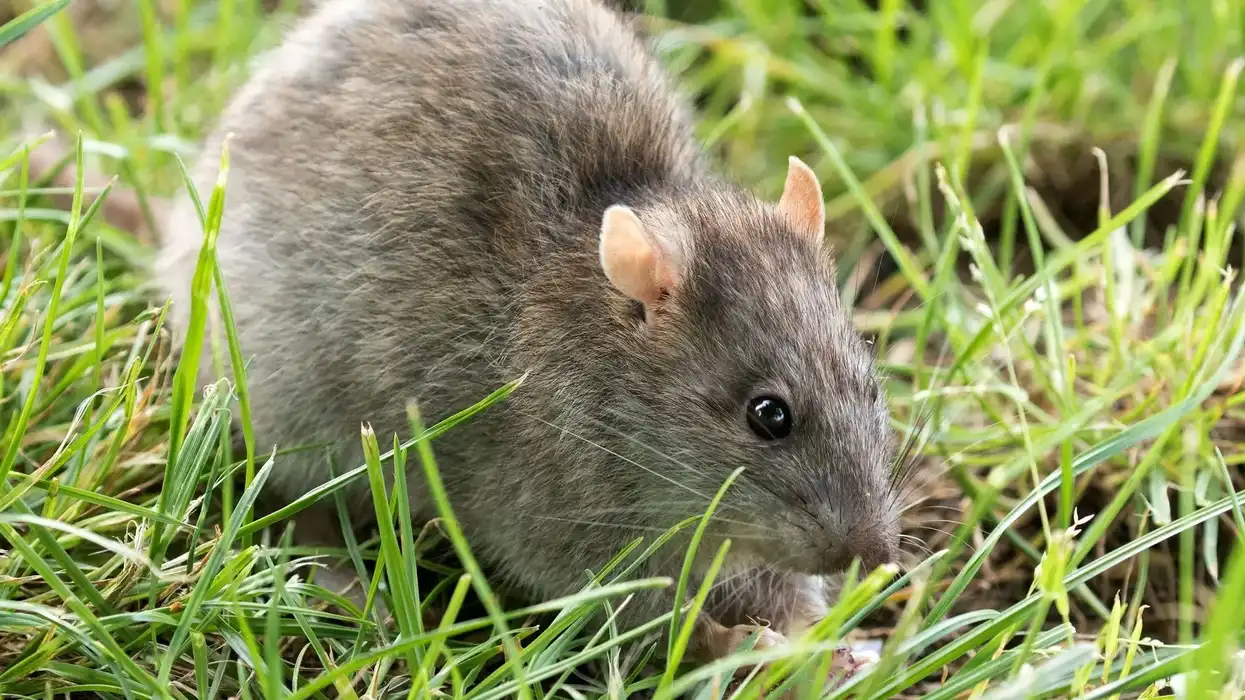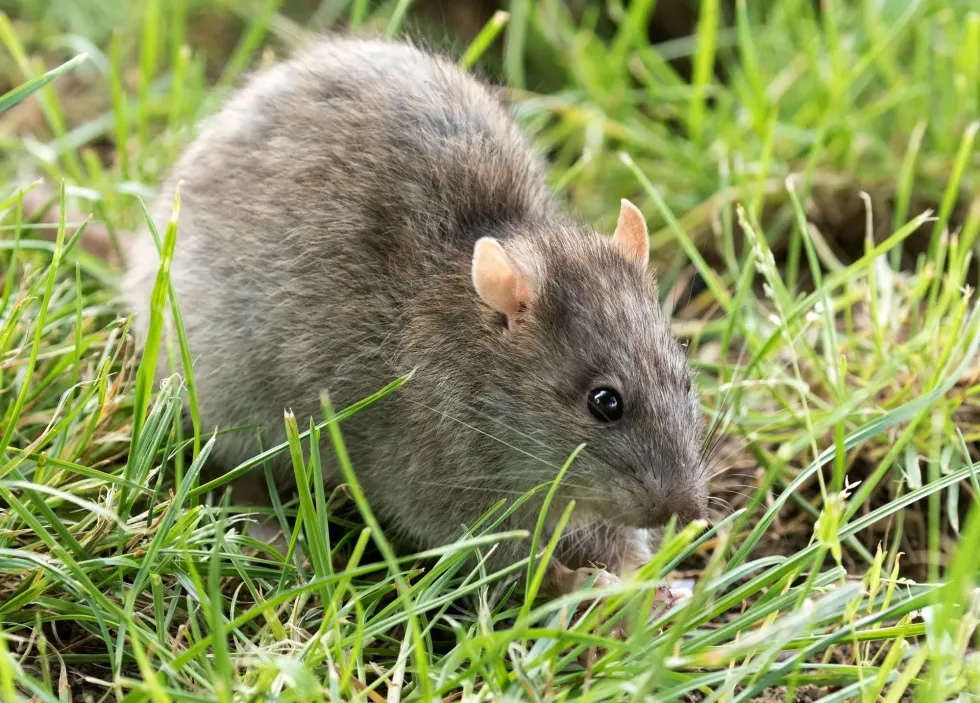The Bosavi woolly rat is a new species of giant rat that was discovered in 2009. It is believed that the this new species of giant rat is a member of the Muridae family.
A scientific name is yet to be assigned to the species. The rat was discovered by a biologist working with the Natural History Unit of BBC in Papua New Guinea.
The extinct volcano Mount Bosavi has a huge crater within which several animals exist. The Bosavi woolly rat was first discovered by Kristofer Helgen and Muse Opiang.
The rainforest habitats in the crater is still believed to house a number of new species. The giant woolly rat was filmed by the crew of ‘Lost Land of the Volcano’, a documentary produced by the BBC.
If you enjoy going through articles on animals, you can also find out more about Nutria and Gopher.
Bosavi Woolly Rat Interesting Facts
What type of animal is a Bosavi woolly rat?
A Bosavi woolly rat resident of Papua New Guinea is a species of rodent that belongs to the Muridae family. It was first discovered by Kristofer Helgen and Muse Opiang while working with the Natural History Unit of BBC .
What class of animal does a Bosavi woolly rat belong to?
Like all other rats, the Bosavi woolly rat also belongs to the class of mammals and is part of the Animalia kingdom. The scientific name is not assigned yet but it belongs to the genus Mallomys.
How many Bosavi woolly rats are there in the world?
At present, only a single specimen of the Bosavi woolly rat has been discovered.
Where does a Bosavi woolly rat live?
The lone specimen of the Bosavi woolly rat was found inside the crater of Mount Bosavi an extinct volcano in Papua New Guinea. The rat was discovered inside a huge volcanic crater.
What is a Bosavi woolly rat's habitat?
Since the Bosavi woolly rat, belonging to the genus Mallomys, is a newly discovered species, not much is known about the habitat of this animal. But what is known is that it inhabits the mountain rainforest.
Who do Bosavi woolly rats live with?
The Bosavi woolly rat was found living alone when it was discovered.
How long does a Bosavi woolly rat live?
No information is available on the Bosavi woolly rat longevity. The Bosavi woolly rat lifespan is unknown at this point.
How do they reproduce?
There is no information about the breeding process of the Bosavi woolly rat.
What is their conservation status?
The Bosavi woolly rat is a new species that is not listed in the IUCN Red List of Threatened Species. The animal was discovered in 2009 and no conservation efforts has yet been implemented for it.
Bosavi Woolly Rat Fun Facts
What do Bosavi woolly rats look like?
The Bosavi woolly rat has a silver brown coat and long thick fur. It is a giant rat species found in Papua New Guinea.
 *We've been unable to source an image of Bosavi woolly rat and have used an image of brown rat instead. If you are able to provide us with a royalty-free image of Bosavi woolly rat, we would be happy to credit you. Please contact us at hello@kidadl.com.
*We've been unable to source an image of Bosavi woolly rat and have used an image of brown rat instead. If you are able to provide us with a royalty-free image of Bosavi woolly rat, we would be happy to credit you. Please contact us at hello@kidadl.com.
How cute are they?
The Bosavi wooly rat does look cute with its silvery brown fur.
How do they communicate?
Only a single member of the species has been discovered by humans. So we do not know its mode of communication with other rats.
How big is a Bosavi woolly rat?
The Bosavi woolly rat size is 32 in (82 cm) in length. The rodent is almost nine times the size of the Kangaroo Rat.
How fast can a Bosavi woolly rat run?
Unfortunately, there is no information available on the speed at which these rodents can run.
How much does a Bosavi woolly rat weigh?
The Bosavi woolly rat weighs about 3.3 lb (1.5 kg). It is one of the largest rats in the world. If we compare the species to the woodrat, the Bosavi woolly rat is three times heavier than the woodrat.
What are the male and female names of the species?
There are no distinct names for males and females of the species.
What would you call a baby Bosavi woolly rat?
A baby Bosavi woolly rat is known as a pup.
What do they eat?
Scientists discovered the Bosavi woolly rat to feed on leaves and grass.
Are they dangerous?
It is assumed that the rat is not dangerous due to the fact that it was not bothered by the crowd of people who had gathered around him when it was discovered.
Would they make a good pet?
It can only be speculated whether the Bosavi woolly rat would make a good pet or not. From its behavior, it seemed that it might become a good pet. It has no fear of humans.
Did you know...
The African pygmy mouse is the smallest rat in the world.
Found in South America, the capybara is the largest rodent species in the world.
What is special about Bosavi woolly rat?
The Bosavi woolly rat, with its thick fur, was discovered in 2009 and immediately became known as one of the largest rodents in the world. What is more surprising is the fact that this giant rat was not bothered by the presence of humans at all.
How did the Bosavi woolly rat get its name?
The naming of the Bosavi woolly rat is based on logical reasons. The giant rat was discovered in a crater of Mount Bosavi and its body is covered with woolly fur. Hence, the name Bosavi woolly rat.
Here at Kidadl, we have carefully created lots of interesting family-friendly animal facts for everyone to discover! For more relatable content, check out these black rat facts and Tanezumi mole rat facts pages.
You can even occupy yourself at home by coloring in one of our free printable Arizona mammal coloring pages.
Main image by Zeynel Cebeci
Second image by Zeynel Cebeci
*We've been unable to source an image of Bosavi woolly rat and have used an image of brown rat instead. If you are able to provide us with a royalty-free image of Bosavi woolly rat, we would be happy to credit you. Please contact us at hello@kidadl.com




 *We've been unable to source an image of Bosavi woolly rat and have used an image of brown rat instead. If you are able to provide us with a royalty-free image of Bosavi woolly rat, we would be happy to credit you. Please contact us at hello@kidadl.com.
*We've been unable to source an image of Bosavi woolly rat and have used an image of brown rat instead. If you are able to provide us with a royalty-free image of Bosavi woolly rat, we would be happy to credit you. Please contact us at hello@kidadl.com.




